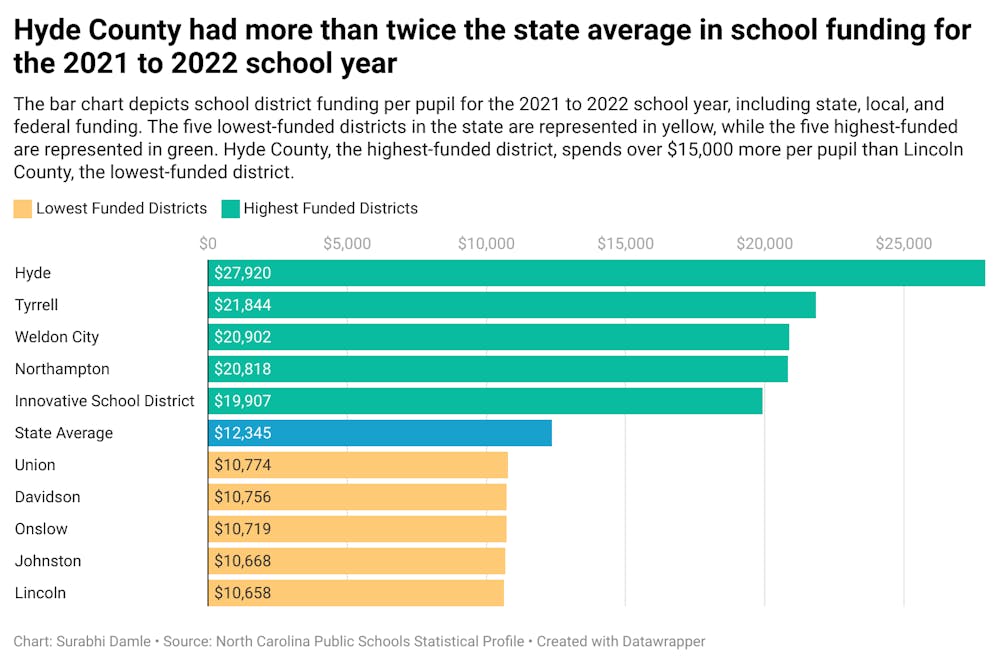North Carolina ranks 50th in school funding effort and 48th in overall funding level, according to the Education Law Center's annual “Making the Grade” report, which was released on Dec. 13. The report overviews the condition of public school funding across the United States.
The latest report includes data from the 2019-20 school year, which was the most recent data available from the U.S. Census Bureau. North Carolina’s funding effort was measured at 2.32 percent of the state’s wealth and 1.28 percent below the national average — the largest negative gap of any state.
“It is extremely unfortunate that we have a General Assembly who does not see the value in making sure that we are funding our public schools,” Tamika Walker Kelly, president of the North Carolina Association of Educators, said.
The report measures and ranks each state’s school funding on three fairness measures: per-pupil revenue, funding distribution to low-income districts and the percentage of state GDP that is allocated toward education.
“What we hope is that the report gives people the tools to speak plainly and clearly about any inequities and problems that exist in their state, so that people can use this to go to their state legislators to advocate for changes in their funding formulas," Danielle Farrie, the Education Law Center's research director, said.
North Carolina’s funding level was $10,791 per student in 2020, $4,655 below the national average. Between 2008 and 2020, the state’s ranking decreased from 46th to 48th place in this category.
Susan Book, a parent advocate with Every Child NC, said she has experienced the effects of inadequate school funding through a lack of instructional support for her son, who is on the autism spectrum.
“Having a sub or long-term sub for a kid with a complicated (individualized education program) can be really devastating because — no fault to the sub, but they don't know my child and what the child needs,” Book said. “And so, it can cause a lot of trauma to a kid who just is sitting there not getting the education they need.”
Walker Kelly said this low level of funding has resulted in insufficient staff to meet student needs and a general shrinking of classroom resources, including inadequate learning technology.




